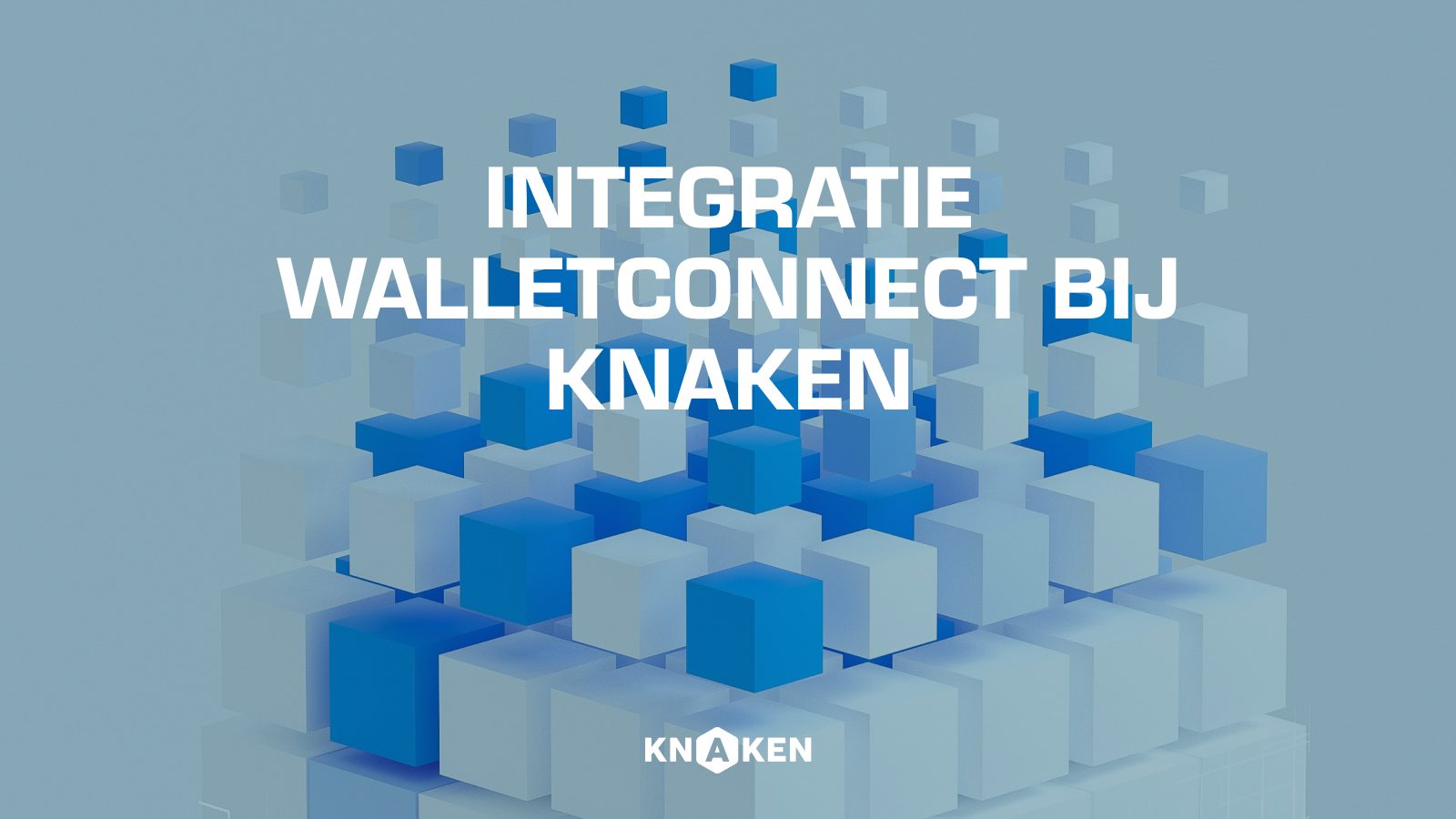

The blockchain is primarily known for being used by cryptocurrencies. These are digital currencies that are stored on the blockchain and are fully managed by the computers that are active within the blockchain network. However, blockchain technology can be used for many more things. Below, we explain what a blockchain is, how blockchain technology works, and what the technology can be used for.
What is a blockchain?
The blockchain is a network of computers that are connected to each other and continuously process transactions made by users. These computers are referred to as nodes in the case of the blockchain. After these transactions have been validated, they are stored on the nodes, where they will never be deleted. The complete history of the blockchain is thus preserved forever.
You can view the blockchain as a large decentralized database. There is not one large party that has control over the blockchain, unlike web servers and the cloud. Just like in these cases, as a user, you can almost store anything on the blockchain. The blockchain supports many different types of data.
What can the blockchain be used for?
Cryptocurrencies are digital currencies that use the blockchain. Thanks to these cryptocurrencies, the blockchain has become a well-known technology. The database of the blockchain records how many cryptocurrencies an individual possesses. Aside from crypto, the blockchain can be used for many other things.
How does blockchain technology work?
Before transactions are stored, they are first checked. The nodes verify whether the executor of the transaction has enough cryptocurrency to make the transaction and whether all the data has been filled out correctly. If this is not the case, the transaction is not accepted.
Reward for validating transactions
The nodes try to verify all transactions as quickly as possible. The first node to do this receives a reward. When a node believes it has checked all transactions, the blockchain network will verify whether the node has done its work correctly.
Before the node can add its work as a block to the blockchain and receive a reward, at least 51% of the network must agree with the node’s work. This is known as the Byzantine Fault Tolerance (BFT) principle, and it is used at various other points within the blockchain.
Adding blocks to the blockchain
The transactions that are valid are combined into a block. Then, the block is converted into a hash using a special algorithm. This hash is a string of characters that makes the contents of the block invisible. But before this happens, the hash of the previous block is first added to the new block. This creates a chain of blocks, called the ‘blockchain’.
How the hash looks is entirely dependent on the contents of the block. Only one bit needs to be changed for the hash to look completely different. This makes the blockchain irreversible: once a transaction has been made, it cannot be undone.
If someone has malicious intent and wants to alter the history of the blockchain, it will be noticed immediately. In that case, a break in the blockchain occurs.
The nodes in the blockchain network keep a copy of the blockchain and continuously check whether the copies from other nodes match their own copy. If it turns out that something is incorrect, it will be noticed immediately. The network will then determine through a vote what should happen next. At least 51% of the network must agree on a certain choice before it is executed.
Cryptography
Users who make a transaction sign it with a digital signature. They need their public key and private key for this. Both keys are obtained when they create a crypto wallet, in which the keys are then stored.
The public key is publicly known, but the private key is known only to its owner. This should never be shared with others, as it could lead to the theft of cryptocurrency. Only with the correct key combination can the correct digital signature be created. This allows the entire network to recognize whether someone is indeed the actual sender and is not impersonating someone else.
Consensus mechanism
With the consensus mechanism, the network ensures agreement. Every blockchain uses a different consensus mechanism. You can think of this mechanism as a list of rules by which the network operates. Therefore, the process described above may look slightly different for certain blockchains. The most well-known consensus mechanisms are Proof of Work (PoW), used by Bitcoin (BTC), and Proof of Stake (PoS), used by Solana (SOL) and Cardano (ADA).
Different types of blockchains
There are different types of blockchains, all of which operate in slightly different ways. Blockchains can be divided into public, private, and hybrid blockchains.
Public blockchain
Anyone can set up a node and join the network of a public blockchain. These are also known as permissionless blockchains. The consensus mechanism of the blockchain ensures the security of the blockchain. This is part of why a public blockchain is very secure, even though everyone has access to the network.
Private blockchain
The private blockchain, also known as a permissioned blockchain, has a network that no one can simply join. Often, the private blockchain is established by a company or organization, and the network consists only of computers used within the company. Therefore, companies do not want other people to have access to the network, which is why they close the blockchain to outside individuals.
Hybrid blockchain
Hybrid blockchains are a combination of public and private blockchains. In general, public blockchains have a lot of difficulty with their scalability. It takes a long time for transactions to be validated, and people pay high transaction fees. Conversely, a private blockchain is often fast and cheap, but not accessible.
The hybrid blockchain combines the best aspects of both types. Anyone could potentially add themselves to the blockchain network, but they must first go through a vetting process. An organization behind the blockchain decides which nodes receive access to the network, preventing the network from becoming too large.
What are the applications of blockchain?
The most well-known application of blockchain is undoubtedly cryptocurrencies. These are digital coins that are not managed by banks but operate decentrally on the blockchain network. It is also possible to use smart contracts. Simply put, these are digital contracts that allow developers to program an application. These applications are also known as decentralized applications, abbreviated as dApps.
These dApps ensure that almost everything can be moved to the blockchain. For example, think of applications for closing insurance, loans, and special marketplaces. This sector is also known as DeFi, which describes the movement of central financial services and products to the blockchain. As a result, such financial services and products become decentralized.
Conclusion
The blockchain is an incredibly important technology that makes it possible to store data in a decentralized manner. This allows cryptocurrencies, as well as applications, to operate on the blockchain. The blockchain network consists of a large number of nodes that are constantly processing transactions. When it comes to a public blockchain, anyone can add their own node to the blockchain. In the case of a private blockchain, this is not possible.
For processing transactions, nodes receive a reward. However, they must do their job properly, as the consensus mechanism ensures control. If it turns out that a node is trying to manipulate the blockchain, the rest of the network can choose to remove the node from the network.
Because the blockchain uses cryptography, this technique is incredibly secure. No one else but the rightful owner can access data and cryptocurrency. This also means that companies cannot sell user data for their own profit, allowing users to experience more privacy.



Knaken Cryptohandel B.V. is registered with De Nederlandsche Bank N.V. (DNB) as a provider of crypto services. DNB supervises Knaken Cryptohandel B.V.'s compliance with the Money Laundering and Terrorist Financing (Prevention) Act and the Sanctions Act 1977. Knaken Cryptohandel B.V. is not subject to prudential supervision by DNB or conduct supervision by the AFM. This means that there is no supervision of financial requirements or business risks and there is no specific financial consumer protection.
Investing in crypto-related products involves significant risks.















